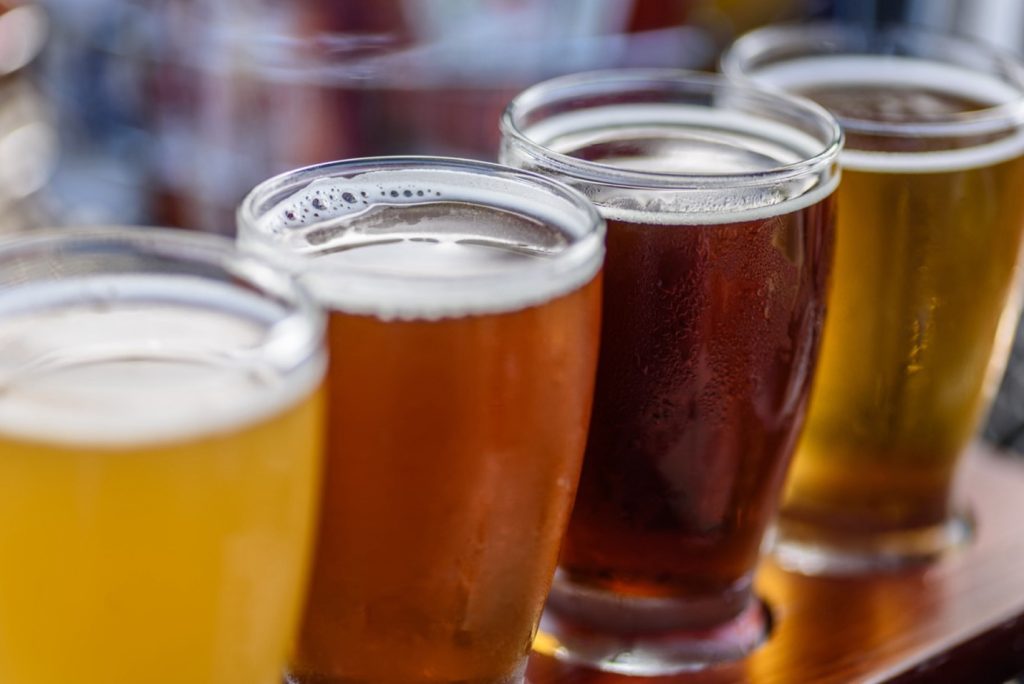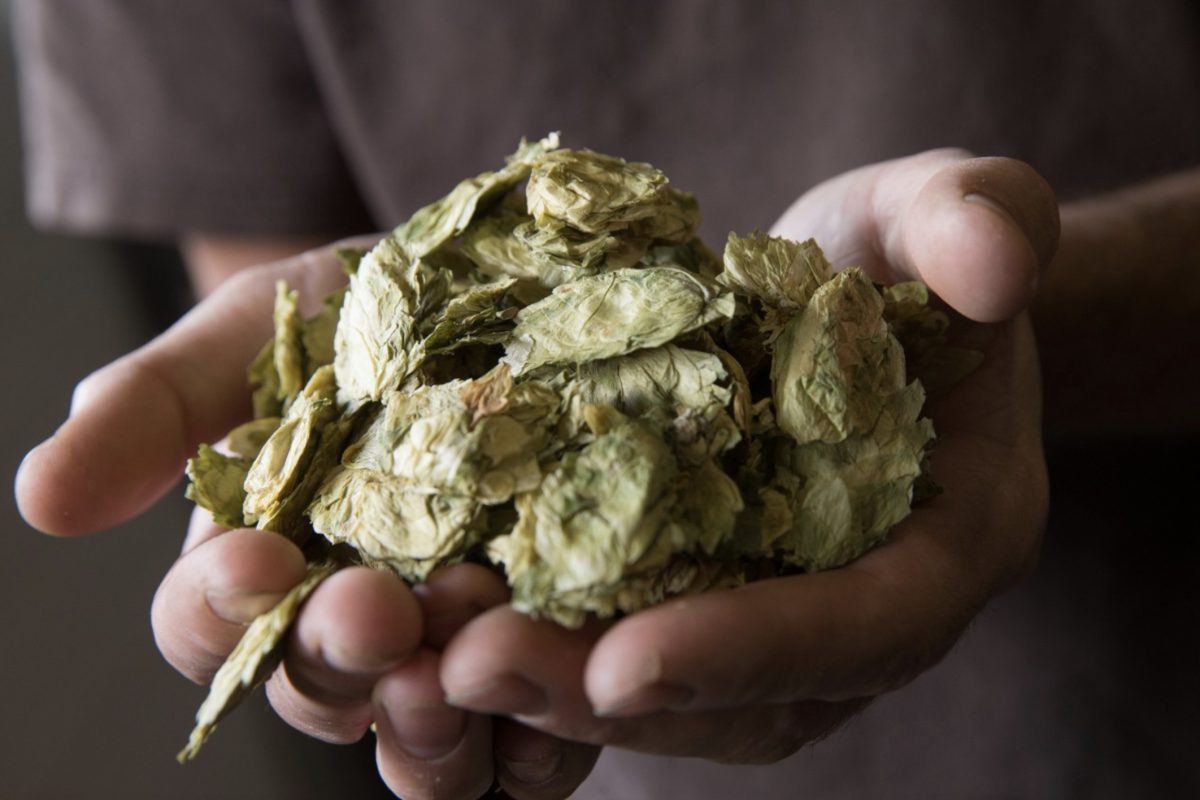The saying adorns T-shirts and bumper stickers: “Life is too short to drink crappy bear.’’ A clear volley aimed by craft beer aficionados at the likes of Budweiser, Coors and Miller Lite.
Fortunately, Plymouth has plenty of locally brewed beer that is not crappy. This appealing trend started in 2008 with the debut of Mayflower Pale Ale. Now, with six other craft brewers established in town, Plymouth has become a beer fan’s destination.
Plymouth brewers have collectively brewed more than 625 different recipes of their beers over time. That is a head-spinning number, one that might confuse even a journeyman brewer. So let’s sort them out.
These 625 brews cover the full gamut of beer styles; from stouts to light lagers. But the predominant style of beers that have been offered here in Plymouth, in keeping with craft brewing trends nationwide, is the India pale ale (IPA).
While India Pale Ale was once a pretty clear description of the flavor profile of a beer – generally lighter and more bitter than the typical brews of the day – the term IPA has become a less informative label as to what you should expect from a beer: West Coast IPA, New England IPA, Session IPA? DDH? Hazy? What?
So, let’s take a quick step back. The process of creating beer is relatively easy to explain, but as any home brewer will lament, difficult to execute well.
Simply put, grains, notably barley or wheat, are ‘Mashed’ -steeped in hot water – to extract their sugars. Next, hops are added for flavor and bitterness and the entire concoction boiled. The result is what is called a ‘wort.’
The wort is cooled and transferred to a fermenter tank where yeast is added. The yeast converts the sugars into alcohol and carbon dioxide. This fermentation process can take as little as a week, but up to around six weeks for some types of beers. That’s pretty much it. Well, not really; there are near infinite variations – which grains, hop and yeast combinations to utilize and how much of each to include (and when to add them).
Brews are divided into two broad groups: lagers and ales. The distinction derives from the types of yeasts used and the temperatures at which the yeasts best convert the sugars to alcohol.

Lagers use yeasts that work best at temperatures around 50˚ and ales employ yeasts that work at temps nearer room temperature (around 65˚). The warmer ale yeasts take less time to produce alcohol than the cooler lagers, hence there is an economic incentive to make ales rather than lagers.
The Brewers Association, a trade group, identifies some 35 varieties of lagers and 96 ales. Of the ales, 18 are called pale ales, and seven of those are identified as India pale ales. But distinctions within these types can produce any number of variations.
But what makes an ale pale or an IPA? Both terms originated in England but have been largely commandeered by American brewers.
The original pale ales were lighter in color than the typically dark brews of the time, generally clear and relatively low in both alcohol content and bitterness. There are several styles of beer that fall under the pale ale umbrella, but the style that has taken center stage in the United States is the India pale ale.
Tradition has it that in order to satisfy the drinking habits of the soldiers of the 18th Century, East India Company, British brewers increased the bitterness of the brews shipped there by increasing the amount of hops in the brew. This limited the spoilage caused by bacteria on the long, hot journey around Africa to India.
The soldiers grew accustomed to the increased bitterness and, upon returning home to England, asked for this style of ale.
Today’s versions of IPAs still contain a significant quantity of hops, but the bitterness is often balanced by the inclusion of additional grain in the recipe.
The finer distinctions among pale ales and IPAs were originally due to the level of alcohol and the flavor profile. Let’s start with the alcohol. Beer strength is measured by ABV, or alcohol by volume. For pale and India pale ales the classifications are generally as follows:
|
Classification |
ABV |
|
|
Session Pale Ales & IPAs |
< 5% |
Named ‘Session’ primarily because you can drink these for a fairly long session without the effect of the alcohol becoming problematic. At least, that’s the idea. |
|
Pale Ales & IPAs |
5% – 7% |
The unadorned name for the brews strength we are accustomed to drinking and of measuring the effects. |
|
Double Pale Ales & IPAs |
7% – 9% |
Also called ‘Imperial’ by those who are anti-math or pro snoot, these are reasonably strong, but flavorful brews. With that high ABV, beer lovers would be advised to sip, not gulp. |
|
Triple IPAs |
9%+ |
Very, very strong, typically referred to as “boozy.” One and done, or better, share with a friend. |
Increases in alcohol are a product of additional fermentable grain and sugars during the brewing process. The resulting sweet flavor is typically balanced through the addition of even more hops. The higher ingredient costs create a more expensive brew. But when done well, it is worth it. Here’s a sampling of our Plymouth brewers’ current Pale Ales and IPAs:
Session pale ales & IPAs:
- Mayflower Leisure Mode IPA; 4.5%
- IndieFerm Plymouth Rocks IPA; 4.8%
- Second Wind Buckshot IPA; 4.6%
Pale ales & IPAs:
- Mayflower IPA; 6.1%
- Mayflower New World IPA; 6%
- IndieFerm Wedding Vows While Standing in a Shallow Grave IPA; 6.5%
- IndieFerm Old’s Cool IPA; 6%
- Second Wind Where It Began Pale Ale; 6.7%
- Llama Nama West Coast Pale Ale; 6.5%
Double pale ales & double IPAs (DIPAs):
- Mayflower Love & Wrestling; 8%
- IndieFerm Squeezy Wrench Double IPA; 8.5%
- Second Wind Downtown Rabbits IPA; 8%
- Llama Nama Hazy IPA (NEIPA #9); 7%
Triple IPAs:
- Second Wind Artic Frost; 11.2%
I’ll close with a quote from Gonzo journalist Hunter S. Thompson.
“There is an ancient Celtic axiom that says ‘Good people drink good beer.’ Which is true, then as now. Just look around you in any public barroom and you will quickly see: Bad people drink bad beer. Think about it.” ~ Hunter S. Thompson
Please, be good, people! Drink local!
Paul Boyd, a Plymouth resident, is a professor and faculty director of the MBA program at Johnson & Wales University in Rhode Island. His research has focused on growth and success in the craft beer industry. To better understand the world of beer, Paul samples an occasional IPA – or two – around town and will share what he finds in upcoming Beer Town columns.

